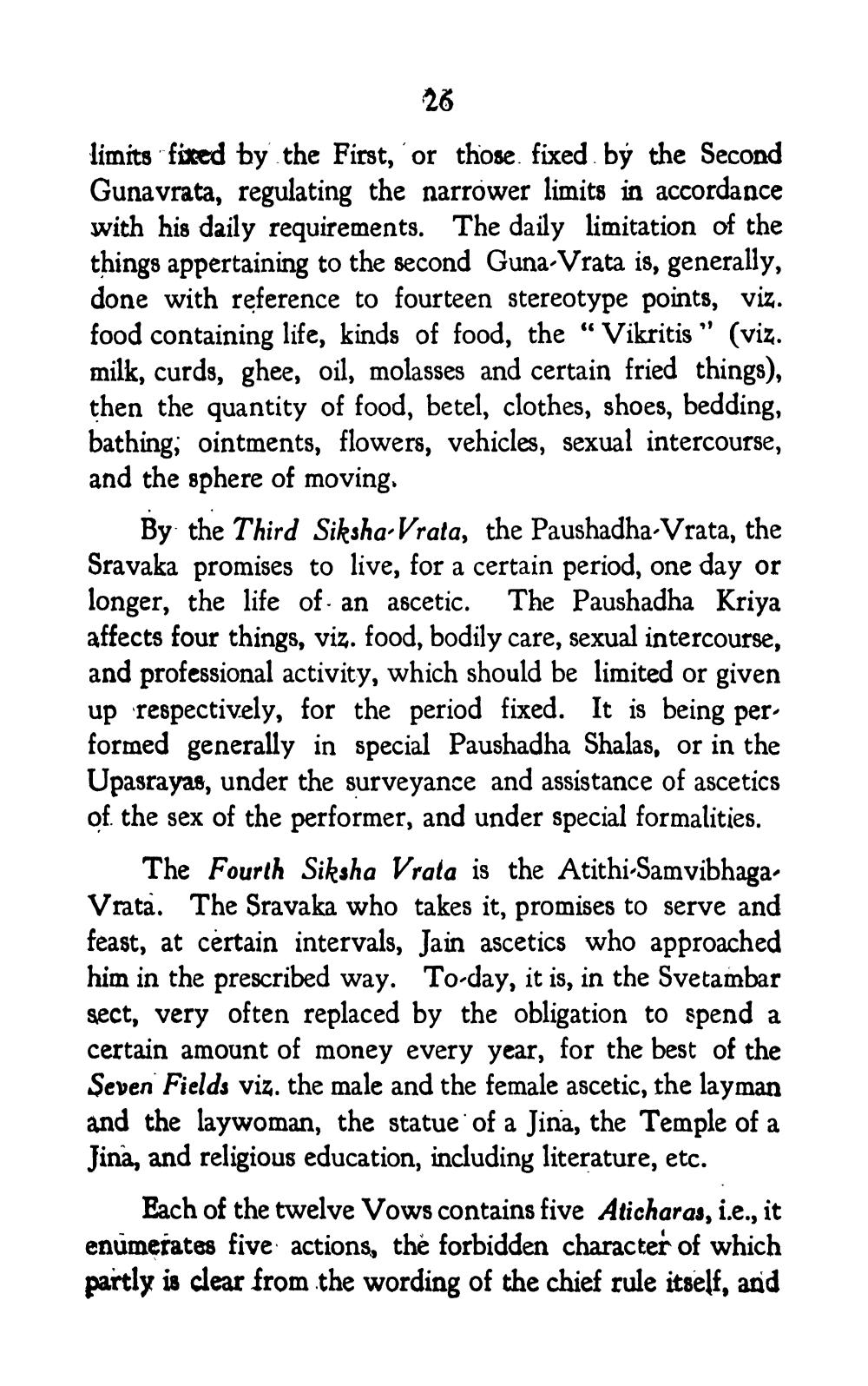________________
26
limits fixed by the First, or those fixed by the Second Gunavrata, regulating the narrower limits in accordance with his daily requirements. The daily limitation of the things appertaining to the second Guna-Vrata is, generally, done with reference to fourteen stereotype points, viz. food containing life, kinds of food, the "Vikritis (viz. milk, curds, ghee, oil, molasses and certain fried things), then the quantity of food, betel, clothes, shoes, bedding, bathing; ointments, flowers, vehicles, sexual intercourse, and the sphere of moving.
99
By the Third Siksha-Vrata, the Paushadha-Vrata, the Sravaka promises to live, for a certain period, one day or longer, the life of an ascetic. The Paushadha Kriya affects four things, viz. food, bodily care, sexual intercourse, and professional activity, which should be limited or given up respectively, for the period fixed. It is being performed generally in special Paushadha Shalas, or in the Upasrayas, under the surveyance and assistance of ascetics of the sex of the performer, and under special formalities.
The Fourth Siksha Vrata is the Atithi-SamvibhagaVrata. The Sravaka who takes it, promises to serve and feast, at certain intervals, Jain ascetics who approached him in the prescribed way. To-day, it is, in the Svetambar sect, very often replaced by the obligation to spend a certain amount of money every year, for the best of the Seven Fields viz. the male and the female ascetic, the layman and the laywoman, the statue of a Jina, the Temple of a Jina, and religious education, including literature, etc.
Each of the twelve Vows contains five Aticharas, i.e., it enumerates five actions, the forbidden character of which partly is clear from the wording of the chief rule itself, and




